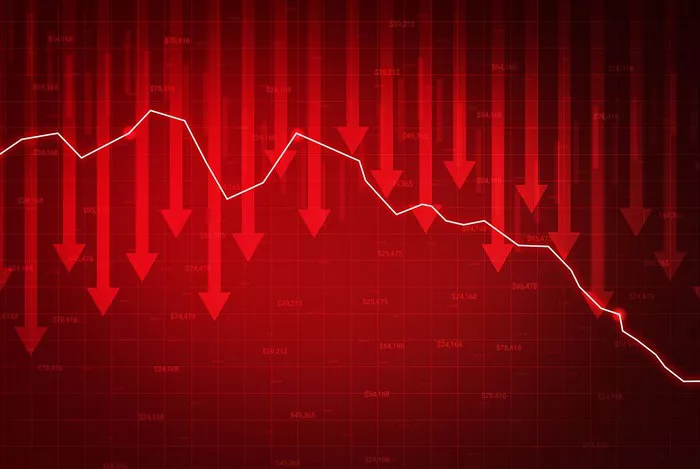Minimum wage is a crucial factor in determining the standard of living and overall economic health of a country. For many workers in Mexico, minimum wage rates directly affect their ability to meet daily living expenses. The minimum wage in Mexico is adjusted periodically by the government, and understanding these rates is essential for businesses, policymakers, and individuals who are part of the global economy. In this article, we will explore the minimum wage in Mexico in USD, examining its history, current rate, economic impact, and how it compares to other countries, particularly in the context of the United States.
Historical Overview of Minimum Wage in Mexico
Minimum wage laws in Mexico have a long history, and the development of these laws can be traced back to the early 20th century. The Mexican government introduced the first federal minimum wage laws in 1931 as part of efforts to address social inequality and promote fair wages for workers. Over the years, these laws have evolved with changes in the country’s economic conditions.
Initially, the minimum wage in Mexico was quite low, and it remained relatively stagnant for many years. However, significant adjustments started being made in the 1980s and 1990s, partly due to economic reforms and pressures from labor unions. Today, the minimum wage in Mexico is determined by the National Minimum Wage Commission (Comisión Nacional de los Salarios Mínimos, or CONASAMI), which evaluates the economic situation and adjusts the rates annually.
Current Minimum Wage in Mexico (2025)
As of 2025, the minimum wage in Mexico is set at 207.44 Mexican Pesos (MXN) per day for most of the country. This rate is an improvement from previous years, reflecting the government’s ongoing efforts to improve the wages of low-income workers. The government’s goal is to ensure that workers have enough income to meet their basic needs and live with dignity.
However, the minimum wage varies slightly depending on the region in Mexico. Some areas, particularly those with higher living costs, have a higher minimum wage rate. For example, in the northern border region of Mexico, the daily minimum wage is set at 312.41 MXN. This difference is due to the higher costs of living in border regions, where workers are exposed to the economic dynamics of the United States.
Converting Mexican Pesos to US Dollars
To better understand the purchasing power of the Mexican minimum wage, it is necessary to convert it into US dollars. The exchange rate between the Mexican Peso (MXN) and the US Dollar (USD) fluctuates daily, but for the sake of this article, we will use an approximate rate of 1 USD = 18 MXN. With this conversion rate:
The daily minimum wage in Mexico is about 11.53 USD for most of the country.
The daily minimum wage in the northern border region is approximately 17.34 USD.
These figures provide insight into the purchasing power of workers in Mexico and how it compares to workers in the United States.
Economic Impact of the Minimum Wage in Mexico
The minimum wage in Mexico plays a significant role in the country’s economy. It affects not only the earnings of workers but also the overall consumption patterns, inflation rates, and economic growth.
Improving Living Standards
The increase in the minimum wage over recent years has been a critical measure in addressing poverty in Mexico. While the minimum wage still does not provide a high standard of living compared to countries like the United States, it helps workers meet their basic needs for food, housing, and healthcare. By raising the minimum wage, the Mexican government aims to reduce income inequality and create a more equitable society.
Boosting Consumer Spending
When the minimum wage increases, it has a direct impact on consumer spending. With more disposable income, workers are able to purchase goods and services, which in turn boosts demand in the local economy. This increase in demand can lead to greater economic growth, as businesses experience higher sales and may even expand operations to accommodate the increased demand.
However, there are concerns that too sharp an increase in minimum wages could lead to higher inflation. Businesses might pass on the increased labor costs to consumers in the form of higher prices, which could neutralize the benefit of higher wages.
Labor Market and Employment Rates
One of the challenges of increasing the minimum wage is the potential impact on employment. Some economists argue that raising the minimum wage could lead to job losses, particularly in industries that rely heavily on low-wage labor. Small businesses, for instance, may struggle to pay higher wages and may be forced to cut jobs or reduce working hours.
On the other hand, proponents of higher minimum wages argue that it can lead to greater productivity, lower employee turnover, and a more motivated workforce. When workers are paid a fair wage, they are more likely to stay with their employer, which reduces the costs associated with hiring and training new employees.
Comparison of Minimum Wage in Mexico and the United States
When comparing the minimum wage in Mexico to that in the United States, the stark difference is immediately apparent. As of 2025, the federal minimum wage in the United States is set at 7.25 USD per hour, though many states and cities have set their own minimum wages that are higher than the federal level. In states like California, the minimum wage is as high as 15 USD per hour.
If we assume that a full-time worker in the United States works 40 hours a week, they would earn approximately 290 USD per week at the federal minimum wage rate, or around 15,080 USD annually. By comparison, a worker in Mexico earning the national minimum wage of 11.53 USD per day would earn only about 231 USD per week, or approximately 12,028 USD annually.
This significant disparity in earnings highlights the income gap between the two countries. While the cost of living in Mexico is generally lower than in the United States, workers in Mexico still face challenges in making ends meet with such a low wage. The difference in wages also reflects the differing levels of economic development between the two countries.
Regional Differences in Mexico’s Minimum Wage
As mentioned earlier, there are regional differences in the minimum wage rates across Mexico. Workers in the northern border region, which includes states like Baja California, Sonora, and Chihuahua, earn a higher minimum wage due to the higher cost of living in these areas. The higher minimum wage in these regions aims to compensate workers for the increased cost of goods and services, such as housing and transportation, that they experience compared to workers in other parts of Mexico.
The higher minimum wage in these regions also helps prevent workers from crossing the border into the United States for better-paying job opportunities. By providing a higher wage in border areas, Mexico seeks to retain its workforce and reduce the flow of labor migration to the US.
Challenges and Criticisms of the Minimum Wage System
Despite efforts to improve the minimum wage in Mexico, the system faces significant challenges.
Inflation and Decreased Purchasing Power
One of the main criticisms of the minimum wage system in Mexico is that it has not kept pace with inflation. While the government has raised the minimum wage in recent years, the increases have often been insufficient to offset rising prices. As a result, many workers still struggle to make ends meet, and their purchasing power is limited.
Informal Economy and Job Insecurity
A large portion of the Mexican workforce is employed in the informal economy, where workers do not receive the benefits and protections associated with formal employment contracts. These workers often earn below the minimum wage and lack access to social security, healthcare, and other benefits. This contributes to widespread job insecurity and limits the effectiveness of the minimum wage as a tool for improving workers’ living standards.
Corruption and Enforcement Issues
In some cases, corruption and weak enforcement of labor laws in Mexico have undermined efforts to raise the minimum wage. Employers may fail to comply with wage laws, or workers may be hesitant to report violations due to fear of retaliation. Without effective enforcement, the minimum wage system may not reach all workers as intended.
Conclusion
The minimum wage in Mexico, though gradually improving, remains low by international standards, particularly when compared to the United States. While the government has made strides in raising the minimum wage, the economic challenges of inflation, a large informal workforce, and low purchasing power continue to pose significant obstacles for many workers.
Understanding the minimum wage in Mexico is crucial for both businesses and individuals who operate in the country or have ties to its economy. By considering these wage rates alongside the cost of living and regional differences, one can gain a better understanding of the economic dynamics of the country and the challenges faced by its workers.



























